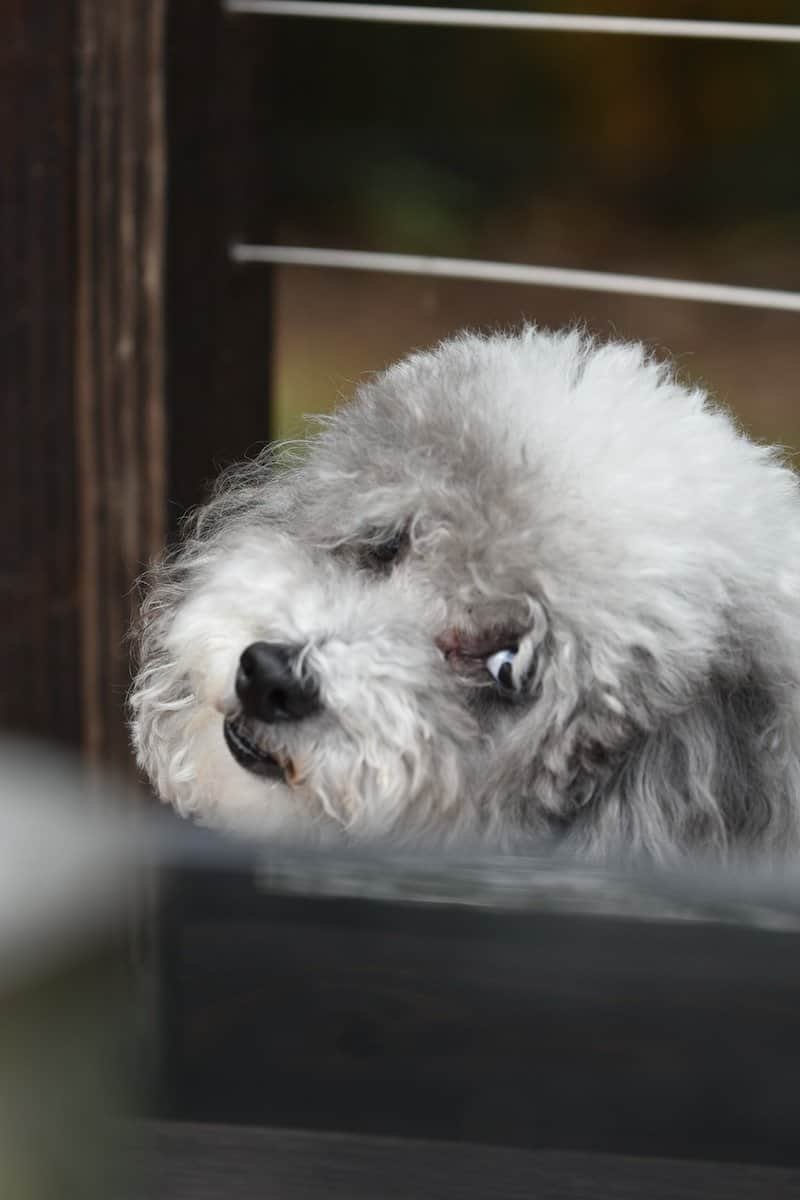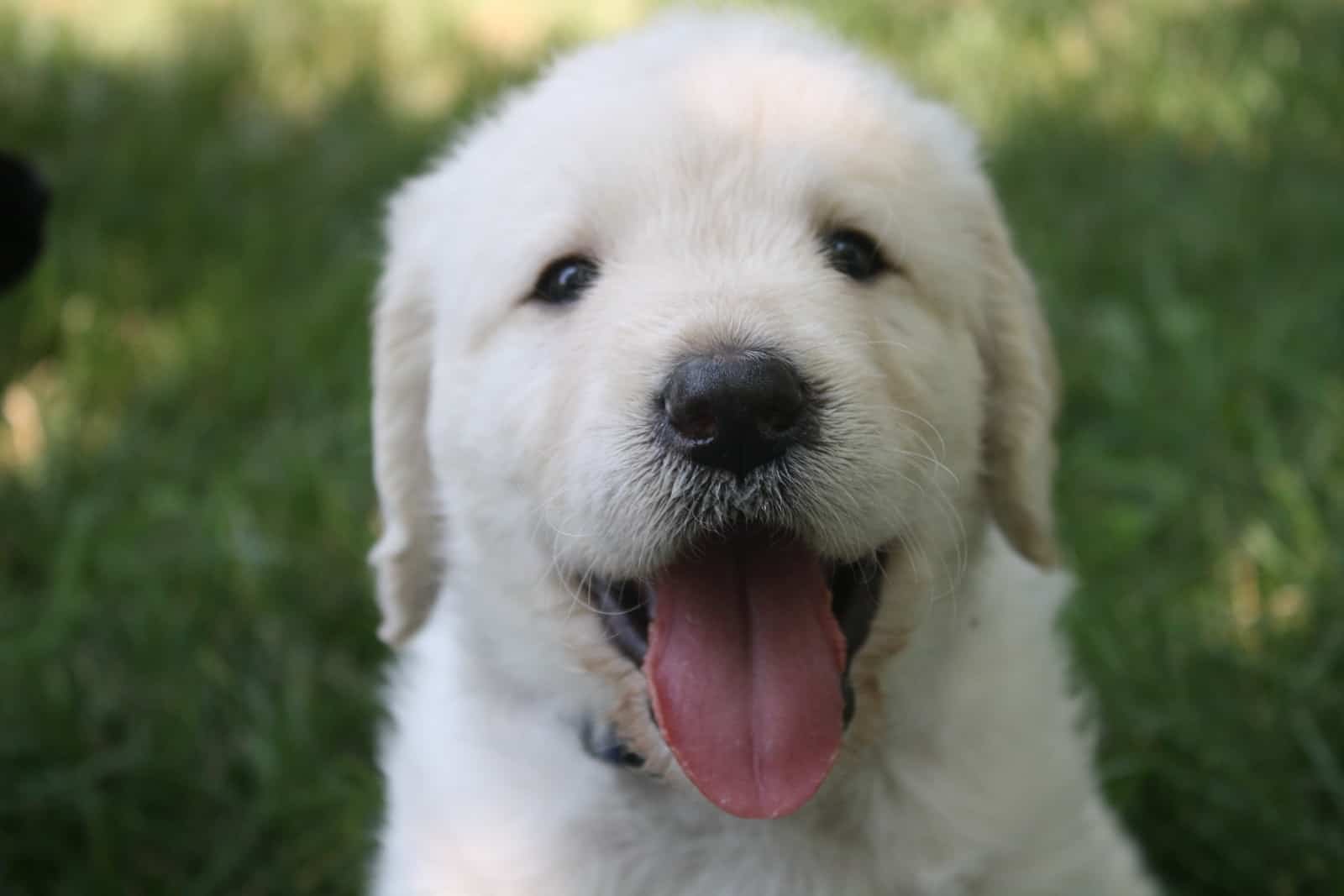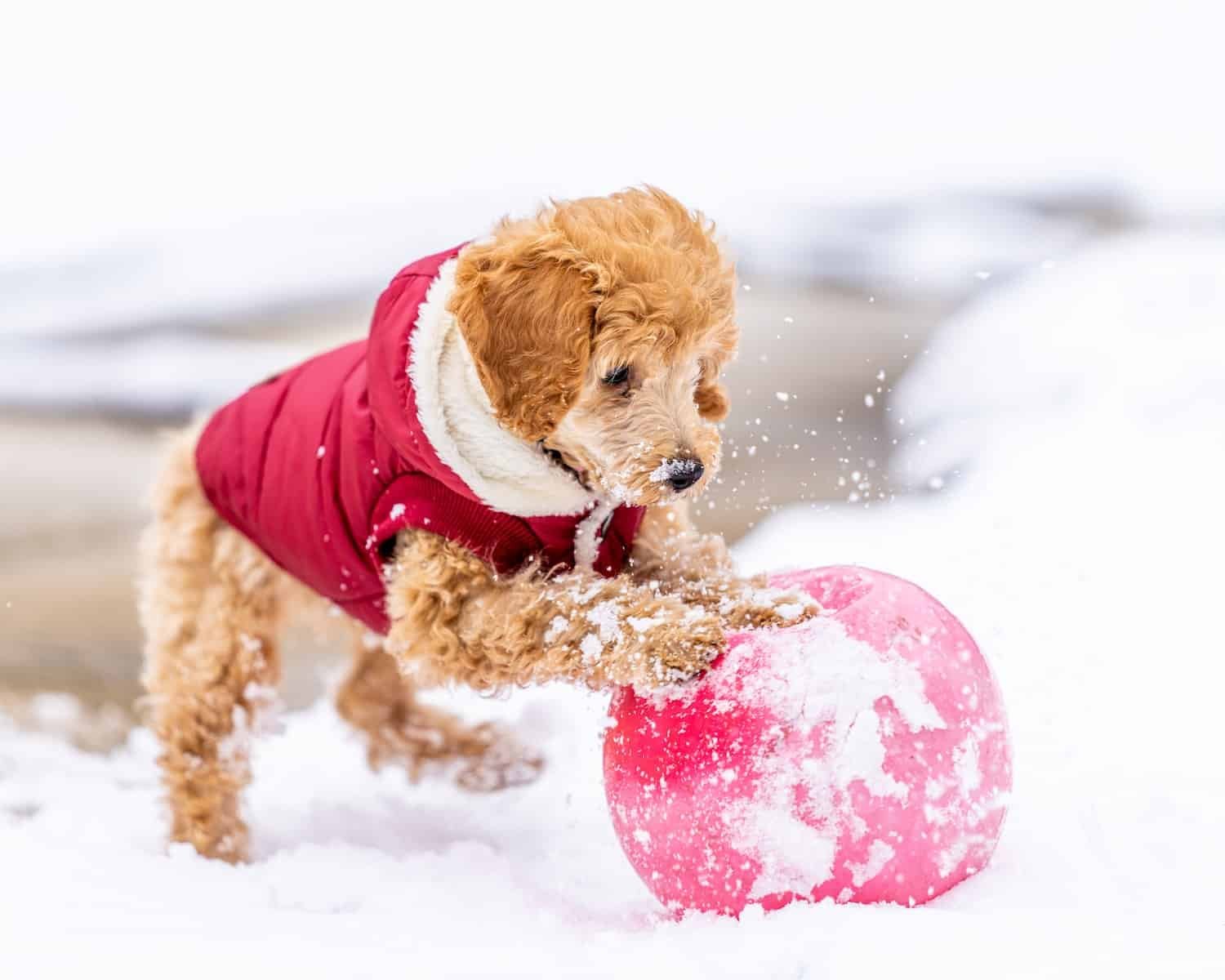
If you are considering getting a poodle, you may be wondering about the differences between toy, miniature, and standard sizes. Each size has its own unique characteristics, making them suitable for different lifestyles and living situations.
The toy poodle is the smallest of the three sizes, standing at 10 inches or less and weighing between 6 to 9 pounds. Miniature poodles are slightly larger, standing between 10 to 15 inches and weighing between 12 to 15 pounds. Standard poodles are the largest of the three sizes, standing over 15 inches and weighing between 40 to 55 pounds. Despite their size differences, all poodles share many common traits, such as their curly, dense coat and high intelligence.
When choosing a poodle, it’s important to consider your living situation and lifestyle. If you live in a small apartment or have limited space, a toy or miniature poodle may be a better fit for you. If you have a larger home and enjoy outdoor activities, a standard poodle may be a better choice. No matter which size you choose, poodles are known for their loyalty, intelligence, and affectionate nature, making them wonderful companions.
Key Takeaways
- Poodles come in three sizes: toy, miniature, and standard.
- Each size has its own unique characteristics and is suitable for different lifestyles and living situations.
- When choosing a poodle, consider your living situation and lifestyle to determine which size is right for you.
Origins and History
Poodles are one of the oldest dog breeds in the world. They are believed to have originated in Germany, where they were bred as water retrievers for hunting. The breed was then introduced to France, where it became a popular circus dog due to its intelligence and ability to learn tricks.
The name “poodle” comes from the German word “pudel,” which means “to splash in water.” This name is fitting, as poodles were originally bred to retrieve waterfowl for hunters. The breed’s curly coat helped protect them from the cold water, while their webbed feet made them excellent swimmers.
Over time, poodles were bred in different sizes to suit different purposes. The Standard Poodle was the original size, used for hunting and retrieving. The Miniature Poodle was bred for companionship, while the Toy Poodle was created as a lapdog for French nobility.
Poodles were recognized as a national dog of France in 1935, and the breed has since become one of the most popular in the world. They are known for their intelligence, elegance, and hypoallergenic coats, which make them a popular choice for people with allergies.
Overall, the history of poodles is a fascinating one, with the breed playing a significant role in both hunting and entertainment. Today, they are beloved pets and show dogs, known for their intelligence, loyalty, and beauty.
Breed Sizes and Characteristics
When it comes to poodles, there are three main sizes: standard, miniature, and toy. Each size has its own unique characteristics that make them stand out. In this section, we will take a closer look at each size and their defining characteristics.
Standard Poodles
Standard poodles are the largest of the three sizes, standing at over 15 inches tall at the shoulder. They are also the heaviest, weighing between 40 and 70 pounds. These elegant dogs are known for their athletic build and graceful movements. They have a curly, dense coat that comes in a variety of colors, including black, white, brown, and gray. Standard poodles are intelligent, loyal, and make great family pets.
Miniature Poodles
Miniature poodles are smaller than standard poodles, standing between 10 and 15 inches tall and weighing between 10 and 15 pounds. Despite their smaller size, they are still athletic and muscular, with a curly coat that is similar to their larger counterparts. Miniature poodles are known for their lively personalities and make great companions for families and individuals alike.
Toy Poodles
Toy poodles are the smallest of the three sizes, standing no more than 10 inches tall and weighing between 4 and 6 pounds. They have a delicate appearance, with a curly coat that comes in a variety of colors. Toy poodles are known for their intelligence and are often used in obedience competitions. They make great pets for those who live in smaller spaces, such as apartments.
In conclusion, poodles come in three sizes, each with their own unique characteristics. Standard poodles are the largest and heaviest, while miniature poodles are smaller but still athletic. Toy poodles are the smallest and most delicate of the three sizes. No matter which size you choose, poodles are intelligent, loyal, and make great family pets.
Coat and Colors
Poodles are famous for their curly coat, which is hypoallergenic and sheds very little. The coat is also water-resistant, making it an excellent choice for those who love to swim. The texture of the coat is soft and woolly, and the hair can grow up to 10 inches long. However, the length of the coat can vary depending on the type of poodle.
The coat of a standard poodle is usually thicker and coarser than that of a miniature or toy poodle. The texture of the coat is also different, with the hair being straighter and less curly. The coat of a miniature poodle is usually softer and more curly than that of a standard poodle. The coat of a toy poodle is the softest and curliest of all three types.
Poodles come in a variety of colors, including black, white, cream, blue, gray, silver, apricot, red, and brown. The American Kennel Club (AKC) recognizes these colors and also allows for variations in shades. For example, apricot can range from a light, creamy color to a deep, reddish-orange color. The AKC also recognizes parti-colored poodles, which have two or more colors in their coat.
When it comes to coat quality, poodles require regular grooming to prevent matting and to keep their coat healthy and shiny. Regular brushing is essential, and it is recommended to take your poodle to a professional groomer every six to eight weeks for a trim.
In summary, poodles have a curly coat that is hypoallergenic and sheds very little. The texture of the coat can vary depending on the type of poodle, with standard poodles having a thicker and coarser coat, miniature poodles having a softer and more curly coat, and toy poodles having the softest and curliest coat. Poodles come in a variety of colors, and regular grooming is essential to maintain the quality of their coat.
Temperament and Personality Traits
Poodles are known for their intelligence, loyalty, and friendly personality. They make great companions for families and individuals alike. Whether you choose a toy, miniature, or standard poodle, you can expect a dog that is active, alert, and eager to please.
One of the most notable characteristics of poodles is their intelligence. They are highly trainable and excel in obedience and agility competitions. They are also quick learners and can be taught a variety of tricks and tasks. This intelligence makes them an ideal choice for those who want a dog that can keep up with their active lifestyle.
In addition to their intelligence, poodles are also known for their loyal and friendly nature. They are affectionate and enjoy spending time with their owners. They are also good with children and other pets, making them a great choice for families.
When it comes to temperament, poodles are generally confident and lively. They have a playful and energetic personality that makes them fun to be around. They are also alert and make excellent watchdogs, barking to alert their owners of any potential danger.
Overall, poodles are a great choice for those looking for an intelligent, loyal, and friendly companion. Whether you choose a toy, miniature, or standard poodle, you can expect a dog that is active, alert, and eager to please.
Health and Lifespan
Poodles, in general, are considered to be a healthy breed. However, like all dogs, they are prone to certain health issues. By understanding these potential health problems, you can take steps to keep your poodle healthy and happy.
Lifespan
The average lifespan of a poodle is between 12 to 15 years. However, with proper care and attention, some poodles have been known to live up to 20 years.
Health Problems
Poodles are prone to certain health problems, including hip dysplasia, patella luxation, progressive retinal atrophy (PRA), and sebaceous adenitis. Hip dysplasia is a condition where the hip joint does not develop properly, leading to arthritis and pain. Patella luxation is a condition where the kneecap dislocates easily, causing lameness. PRA is an inherited disease that causes progressive vision loss. Sebaceous adenitis is a skin condition that causes hair loss and scaly skin.
Hypoallergenic
Poodles are often considered a hypoallergenic breed because they shed very little. However, no dog is completely hypoallergenic, and some people may still be allergic to poodles. If you have allergies, spend time with a poodle before bringing one home to ensure you do not have a reaction.
Bloat
Bloat is a serious condition that can affect poodles. It occurs when the stomach fills with gas and twists, cutting off blood flow to the stomach. Symptoms include vomiting, restlessness, and a distended abdomen. Bloat is a medical emergency and requires immediate veterinary attention.
Separation Anxiety
Poodles are known for being loyal and affectionate dogs. However, this can also lead to separation anxiety when they are left alone for long periods. Symptoms of separation anxiety include destructive behavior, excessive barking, and soiling in the house. Training and socialization can help prevent separation anxiety.
Allergies
Poodles are prone to allergies, including food allergies and skin allergies. Symptoms of allergies include itching, redness, and inflammation. If you suspect your poodle has allergies, consult with your veterinarian to determine the best course of treatment.
Von Willebrand’s Disease
Von Willebrand’s disease is a bleeding disorder that affects poodles. It is caused by a deficiency in a protein that helps blood clot. Symptoms include excessive bleeding from minor injuries and prolonged bleeding after surgery. If your poodle has von Willebrand’s disease, your veterinarian may recommend medication or other treatments.
Cataracts
Poodles are prone to developing cataracts, a condition where the lens of the eye becomes cloudy. Cataracts can lead to vision loss if left untreated. Surgery can be performed to remove cataracts and restore vision.
Luxating Patella
Luxating patella is a common condition in poodles where the kneecap slips out of place. It can cause lameness and pain. Mild cases may not require treatment, but severe cases may require surgery.
By understanding the potential health problems that can affect your poodle, you can take steps to keep them healthy and happy. Regular veterinary check-ups, a healthy diet, and plenty of exercise can all help ensure your poodle lives a long and healthy life.
Grooming and Care
As with any dog breed, grooming and care are essential for the health and well-being of your poodle. Poodles have a single coat of curly fur that requires regular maintenance to prevent matting and tangling. The American Kennel Club recommends that poodles be groomed every four to six weeks to maintain their coat and overall appearance.
One of the most critical aspects of poodle grooming is brushing. Brushing your poodle’s coat regularly can prevent matting and tangling, which can be painful for your dog and lead to skin infections. Use a slicker brush or a comb with fine teeth to remove tangles and mats. You can also use a detangling spray to make the process easier.
Poodles also require regular haircuts to keep their coat at a manageable length. The frequency of haircuts depends on the size of your poodle and your personal preference. Toy poodles typically require haircuts every six to eight weeks, while miniature and standard poodles may only need haircuts every eight to ten weeks.
In addition to brushing and haircuts, poodles also need regular nail trims, ear cleaning, and teeth brushing. Nail trims should be done every four to six weeks to prevent overgrowth, which can lead to discomfort and difficulty walking. Ear cleaning should be done weekly to prevent infections and wax buildup. Teeth brushing should be done daily to prevent dental problems.
Poodles are considered a hypoallergenic breed because they shed very little. However, regular grooming is still necessary to prevent matting and tangling. If you are not comfortable grooming your poodle at home, consider taking them to a professional groomer. A professional groomer can ensure that your poodle’s coat is properly maintained and prevent any potential health issues.
Overall, grooming and care are essential for the health and well-being of your poodle. Regular brushing, haircuts, nail trims, ear cleaning, and teeth brushing are necessary to prevent matting, tangling, and other health issues. If you are not comfortable grooming your poodle at home, consider taking them to a professional groomer to ensure that they receive the best care possible.
Training and Exercise Needs
Training and exercise are essential for the well-being of all poodles, regardless of their size. Toy, miniature, and standard poodles are intelligent breeds that require mental stimulation and physical activity to stay healthy and happy.
Training
Poodles are highly trainable and excel in obedience, agility, and tricks. They are eager to please and respond well to positive reinforcement techniques such as clicker training and treats. Consistency and patience are key when training a poodle, as they can be sensitive to harsh discipline.
Socialization is also crucial for poodles, especially during their early years. Introducing them to various people, animals, and environments can help them develop into well-adjusted and confident adults.
Exercise Needs
Poodles have moderate exercise needs, with daily walks and purposeful activity being essential for their physical and mental health. The amount of exercise required depends on the size of the poodle, with toy poodles needing less exercise than their larger counterparts.
A daily walk of 20-60 minutes at a comfortable but brisk pace is recommended for all poodles. Purposeful activity and play, such as fetch, hide-and-seek, and puzzle toys, can provide mental stimulation and help prevent boredom.
In addition to physical exercise, poodles also benefit from mental stimulation. Training sessions, interactive toys, and games can challenge their intelligence and keep them mentally sharp.
Overall, poodles are a versatile breed that can thrive in a variety of living situations as long as their training and exercise needs are met. With proper care and attention, they can make excellent companions for families and individuals alike.
Diet and Nutrition
Feeding your poodle a healthy and balanced diet is essential for their overall health and well-being. Providing your poodle with the right amount of nutrients and calories can help them maintain a healthy weight and prevent the risk of obesity.
When it comes to feeding your poodle, it is important to choose a high-quality dog food that meets their specific nutritional needs. Poodles are prone to certain health problems, such as skin allergies, so it is important to choose a dog food that is free from common allergens, such as wheat, corn, and soy.
Poodles require a diet that is high in protein to help maintain their lean muscle mass. Look for dog food that contains real meat as the first ingredient, such as chicken, turkey, or beef. Avoid dog food that contains by-products or fillers, as these ingredients do not provide the necessary nutrients that your poodle needs.
It is also important to monitor your poodle’s calorie intake to prevent rapid weight gain. Overfeeding your poodle can lead to obesity, which can increase the risk of health problems such as diabetes and joint problems. Follow the feeding guidelines on the dog food packaging and adjust the amount you feed your poodle based on their age, weight, and activity level.
In addition to their regular meals, you can also provide your poodle with healthy treats. Choose treats that are low in calories and free from artificial colors and flavors. Some good options include small pieces of fresh fruits and vegetables, such as carrots, green beans, and blueberries.
Overall, providing your poodle with a healthy and balanced diet is essential for their health and well-being. Consult with your veterinarian to determine the best diet and feeding schedule for your poodle based on their individual needs.
Living with Poodles
Poodles are a versatile breed that can adapt to various living situations. Whether you live in a small apartment or a large house with a yard, there is a poodle size that will fit your lifestyle. In this section, we will discuss what it is like to live with poodles and how they interact with children, other pets, and families.
Children
Poodles are great family dogs and get along well with children. They are playful and energetic, making them perfect playmates for kids. However, it is important to supervise interactions between children and poodles, especially with smaller children. Poodles can become easily overwhelmed by rough play and may nip if they feel threatened.
Other Pets
Poodles are social animals and generally get along well with other pets. They can be good playmates with cats and other small dogs, but it is important to introduce them slowly and supervise their interactions. Poodles are also known to be good watchdogs and will alert their owners if they sense danger.
Swimming
Poodles were originally bred as water retrievers, and they love to swim. If you have a pool or live near a body of water, your poodle will likely enjoy swimming and playing in the water. However, it is important to supervise your poodle while swimming, especially if they are not experienced swimmers.
Families
Poodles are great family dogs and make excellent companions. They are loyal, affectionate, and love to be around their owners. They are also intelligent and easy to train, which makes them great pets for families with children.
Group
Poodles are part of the non-sporting group of dogs, which means they do not have a specific job or function. They are versatile dogs that can adapt to various living situations and lifestyles. Poodles come in three sizes: toy, miniature, and standard. Each size has its own unique characteristics and personality traits.
Companion Dog
Poodles are considered companion dogs and thrive on human interaction. They are affectionate and love to be around their owners. They are also highly trainable and can learn a wide range of tricks and commands. Poodles require regular exercise and mental stimulation to keep them happy and healthy. If you are looking for a loyal and affectionate companion, a poodle may be the perfect pet for you.
Choosing a Poodle
When choosing a poodle, there are a few things to consider to ensure you find the perfect match for you and your family. Whether you decide to buy from a breeder or adopt from a shelter, it’s important to do your research and find a reputable source.
Size Matters
Poodles come in three different sizes: toy, miniature, and standard. Toy poodles stand at 10 inches or less, miniature poodles stand between 10 and 15 inches, and standard poodles stand over 15 inches tall. Each size has its own unique characteristics, so it’s important to choose the size that best fits your lifestyle and living situation.
Toy poodles are great for those who live in smaller spaces, like apartments or condos, and require less exercise. Miniature poodles are perfect for families with children and those who have a bit more space. Standard poodles are the largest of the poodle breeds and require more exercise and space to move around.
Purebred or Mix?
While purebred poodles are the most popular, poodle mixes like labradoodles have become increasingly popular in recent years. If you’re considering a poodle mix, it’s important to research the breed characteristics of both the poodle and the other breed in the mix to get an idea of what to expect.
Finding a Reputable Breeder
If you decide to buy a purebred poodle, it’s important to find a reputable breeder. A reputable breeder will be knowledgeable about the breed, provide proper care for the puppies, and ensure that the puppies are healthy and well-socialized. They should also be willing to answer any questions you have and provide references.
Adopting a Poodle
Adopting a poodle from a shelter or rescue can be a great option for those who want to give a dog a second chance. Many shelters and rescues have poodles of all sizes and ages available for adoption. It’s important to do your research and find a reputable shelter or rescue and be prepared for the potential challenges of adopting a dog with an unknown history.
Overall, choosing a poodle requires careful consideration of size, breed, and source. Whether you decide to buy from a breeder or adopt from a shelter, it’s important to do your research and find a reputable source that will provide you with a healthy and happy companion.
Poodle Recognition
When it comes to Poodles, there are three recognized sizes: toy, miniature, and standard. Each size has its unique characteristics that distinguish them from one another. Poodles are recognized by several organizations, including the Poodle Club of America and the American Kennel Club.
The Poodle Club of America is the official AKC parent club for the Poodle breed in the United States. It is the oldest club dedicated to the breed in the country, and its mission is to promote the welfare of Poodles. The club also provides education and information about Poodles to the public and holds events such as dog shows and obedience trials.
The American Kennel Club is the largest purebred dog registry in the world, and it recognizes Poodles as a breed. The AKC sets the breed standard for Poodles, which describes the ideal characteristics of each size. The breed standard includes information about the Poodle’s overall appearance, coat, and temperament, among other things.
To be recognized by the AKC, Poodles must meet certain requirements. For example, standard Poodles must be over 15 inches tall at the shoulder, while miniature Poodles must be between 10 and 15 inches tall. Toy Poodles, on the other hand, must be under 10 inches tall. Poodles must also have specific coat colors, such as black, white, and apricot, to be recognized by the AKC.
In conclusion, Poodles are recognized by several organizations, including the Poodle Club of America and the American Kennel Club. Each size has its unique characteristics that distinguish them from one another, and to be recognized by the AKC, Poodles must meet certain requirements.
Frequently Asked Questions
If you’re considering getting a Poodle, you may have some questions about the different sizes and breed characteristics of this popular breed. Here are some frequently asked questions to help you decide which size of Poodle is right for you.
What are the different sizes of Poodles?
Poodles come in three different sizes: Toy, Miniature, and Standard. Toy Poodles are the smallest and stand at 10 inches or less at the shoulder. Miniature Poodles are between 10 and 15 inches tall at the shoulder. Standard Poodles are the largest and stand over 15 inches tall at the shoulder.
How does the weight of Miniature Poodles compare to Toy Poodles?
Miniature Poodles weigh between 15 and 17 pounds, while Toy Poodles typically weigh between 6 and 10 pounds.
What is the difference between Miniature, Standard, and Toy Poodles?
Aside from their size, there are a few other differences between the three types of Poodles. Standard Poodles are the original breed and were used for hunting in the past. Miniature Poodles were bred down from Standard Poodles and were used for companionship. Toy Poodles were also bred down from Miniature Poodles and were primarily kept as lap dogs.
What are the breed characteristics of Toy, Miniature, and Standard Poodles?
All three sizes of Poodles have similar breed characteristics, including their curly, hypoallergenic coat, and their intelligence and trainability. They are also known for their elegant appearance and their affectionate and loyal personalities.
Which size of Poodle has the best temperament?
The temperament of a Poodle is not determined by its size. All three sizes of Poodles can have great temperaments if they are socialized and trained properly.
Can you provide pictures of the different types of Poodles?
Yes, here are some pictures of Toy, Miniature, and Standard Poodles:
Poodles come in three different sizes: Toy, Miniature, and Standard. Toy Poodles are the smallest and stand at 10 inches or less at the shoulder. Miniature Poodles are between 10 and 15 inches tall at the shoulder. Standard Poodles are the largest and stand over 15 inches tall at the shoulder.
How does the weight of Miniature Poodles compare to Toy Poodles?
Miniature Poodles weigh between 15 and 17 pounds, while Toy Poodles typically weigh between 6 and 10 pounds.
What is the difference between Miniature, Standard, and Toy Poodles?
Aside from their size, there are a few other differences between the three types of Poodles. Standard Poodles are the original breed and were used for hunting in the past. Miniature Poodles were bred down from Standard Poodles and were used for companionship. Toy Poodles were also bred down from Miniature Poodles and were primarily kept as lap dogs.
What are the breed characteristics of Toy, Miniature, and Standard Poodles?
All three sizes of Poodles have similar breed characteristics, including their curly, hypoallergenic coat, and their intelligence and trainability. They are also known for their elegant appearance and their affectionate and loyal personalities.
Which size of Poodle has the best temperament?
The temperament of a Poodle is not determined by its size. All three sizes of Poodles can have great temperaments if they are socialized and trained properly.







